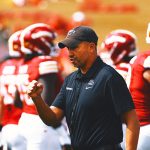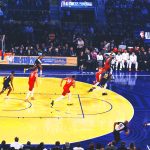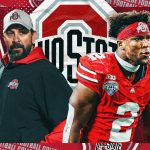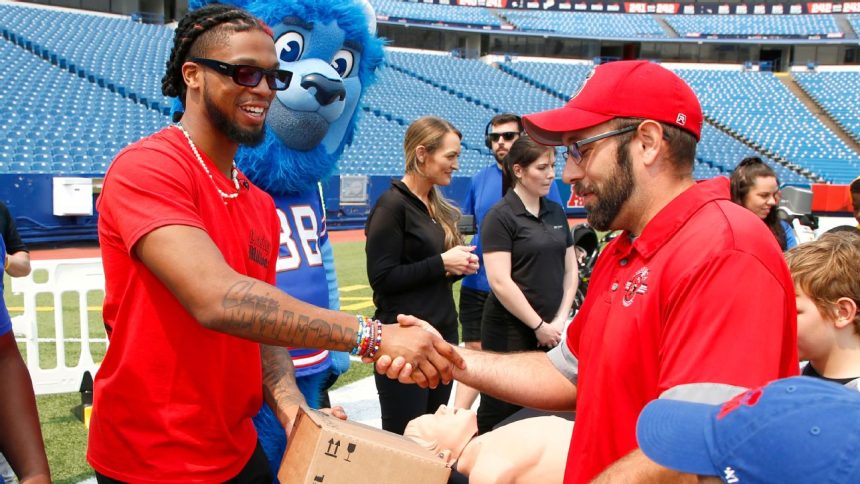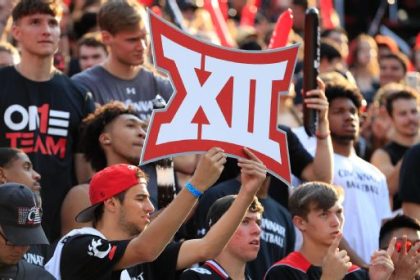
ORCHARD PARK, N.Y. — Before their game on Jan. 7, the Jacksonville Jaguars and Tennessee Titans took a knee in joint prayer in the middle of the field. It was the first NFL game played since “Monday Night Football” on Jan. 2 between the Buffalo Bills and Cincinnati Bengals had been suspended.
Teams and players across the league were showing support for Bills safety Damar Hamlin, who continued to recover at the UC Medical Center in Cincinnati after suffering cardiac arrest during the game. Hamlin was brought back to life on the field in front of thousands watching in Cincinnati and on TV.
That support extended well beyond football — teams, players and fans of different sports at all levels got involved, some in the form of money donated toward a GoFundMe initially set up by Hamlin for a toy drive that skyrocketed to over $9 million.
He was ultimately diagnosed with commotio cordis, “an extremely rare, serious medical condition that can happen after a sudden, blunt impact to the chest,” as described by the American Heart Association (AHA), a diagnosis of exclusion that comes after all other conditions are ruled out. He was cleared to return to football in April and remains a backup safety and special teams player for the Bills.
Hamlin said he has wanted to make an impact his whole life, emphasizing that in a conversation with ESPN two weeks ahead of Sunday’s game back in Cincinnati (8:20 p.m. ET, NBC). What can be learned from the events of Jan. 2 extend far beyond Hamlin himself.
The sports world has reacted in a variety of ways, with programs and funding to promote heart health and increase education. Per the CDC, more than 365,000 people have an out-of-hospital cardiac arrest in the United States every year and about 60% to 80% die before reaching the hospital. Since the incident, the American Red Cross has experienced a notable increase in CPR and automated external defibrillator (AED) course enrollments and inquiries on how to obtain an AED. Locally, in Western New York, more than 10,000 people have been impacted by Hands-Only CPR education, per the AHA.
The response to Hamlin’s near-death experience has resonated across the country.
Response from the NFL: Saving Hamlin’s life was possible thanks to a well-rehearsed plan and proper resources available in the form of athletic trainers and medical professionals. Preparation was vital.
“I think everyone saw that when you have the right plans in place, you have the right equipment, you have the staff in place, that you can have a really positive outcome,” chief operating officer of the Korey Stringer Institute Rebecca Stearns told ESPN. “… That’s one of the biggest things is just this greater conversation, and I think also the idea of this being something that can be achievable even in other levels of play.”
The league office worked on how to make an impact beyond its stadiums.
“Everybody gets scared when something awful happens or you feel out of control, but here we were coming to it from a place of, well, we can give people a little bit more control and a little bit more knowledge that could actually help save lives,” said Anna Isaacson, NFL senior vice president of social responsibility.
After talking to its partners, the NFL saw an opportunity to educate on how common sudden cardiac arrest is and how to save lives.
The NFL invested at the national level and is working with organizations like the AHA to make sure people in NFL markets had access to CPR education, in addition to leaguewide advocacy efforts on a variety of elements of sports safety. That included making a more than a $1 million investment from the NFL Foundation.
“We are now able to really bring this front and center and allow kids to become educated on something that’s so incredibly important,” said Alexia Gallagher, vice president of philanthropy & executive director of NFL Foundation. “Something that they can spearhead with their families and become educated on, it’s a pretty incredible thing.”
On the field, the NFL made a change to its emergency action plan (EAP), which is approved by the NFL and NFLPA, Before each game, there is a “90-minute meeting” prior to kickoff, where emergency responders meet to further coordinate on roles, protocols and double-check equipment in the event of an on-field emergency. This adds to a 60-minute medical meeting that already took place with referees and other key personnel on the EAP and other logistics.
For the Bills, helping spread the message on CPR and AED education is personal. Over six months prior to Hamlin’s cardiac arrest, team co-owner Kim Pegula suffered cardiac arrest. Bills staff, coaches and players were given the opportunity to learn Hands-Only CPR over the course of the offseason. There is a five-year partnership with the AHA and an over $1 million commitment.
Of the NFL’s 32 teams, 23 have held at least one event or performed work to further CPR education, including the Giants who made CPR classes available to all coaches and football field staff after Hamlin’s incident (nine did not respond to ESPN’s request for comment). All the clubs are applying for $20,000 grants from the NFL Foundation on a rolling basis and given flexibility to do what works best for their community with a focus on CPR education.
The trickle-down responses: The ripples from Hamlin’s cardiac arrest have been felt at the collegiate level. It was reinforced after USC basketball player Bronny James went into cardiac arrest on July 24, likely caused by a congenital heart defect.
“We get trained as coaches, but our players never have,” Pitt football coach Pat Narduzzi told ESPN in April. “So, now our players are all trained in it … You hope you never have to save somebody’s life, but Damar and what happened on that Monday night is helping people save lives.”
The Pac-12 has conducted a review of protocols for games and events and added new steps. The SEC looked at its own policies, with the NFL also sharing what happened and giving others a real-world example of what worked and what lessons could be learned.
“Talking about how important being prepared just made everybody sort of pick up their head,” the SEC’s chief medical officer, Dr. Catherine O’Neal, said. “‘Hey, let’s dust off the cobwebs of some parts of our emergency action plan and make sure that it works and practice it with a little bit more intention.”
In March, the NFL launched the Smart Heart Sports Coalition, partnering with several sports leagues such as the NBA and MLB and other groups to establish policies to prevent deaths in high school athletes from sudden cardiac arrest. Three goals came with it — to have EAPs for each high school athletic venue, clearly marked AEDs at each venue or within 1-3 minutes and CPR and AED education for coaches.
When the coalition was formed, only seven states had all three policies, while 12 states had none. Sudden cardiac arrest is the leading cause of death for student athletes, per the AHA.
“We know that these [policies are] highly effective at saving lives,” Stearns said. “… I really do think that it’s going to move forward, and the thing that I’m going to say, that is so hard to say, is that the only question is how many more lives are we gonna lose before every state gets us into place.”
The recurring message at CPR education events has been what happened to Hamlin inspired learning. Hamlin’s cardiac arrest raised awareness in youth football leagues, too, according to a USA Football spokesperson. In July 2023, USA Football formed a multi-year partnership with Defibtech and One Beat Medical to provide youth football leagues with (AEDs) and sudden cardiac arrest education.
On the national level, the Access to AEDs Act was introduced in Congress in March, with Hamlin present, to help spread education and access to CPR and AEDs in public elementary and secondary schools.
Hamlin himself has gotten involved through his Chasing M’s charity, bringing the Hands-Only CPR education to different cities, and donated AEDs to 50 youth sports teams at each stop.
“To be able to get out to cities and actually make an impact and get people trained in CPR and pass out AEDs to youth leagues,” Hamlin told ESPN.” I think that’s the biggest impact that I’m super proud of.”

